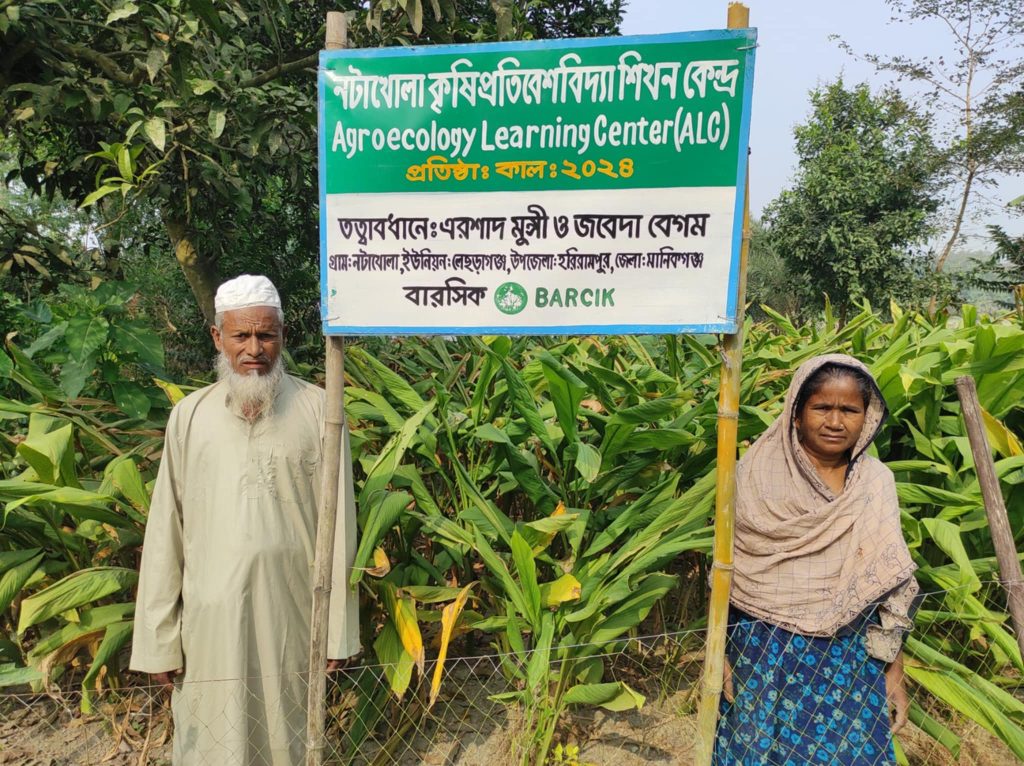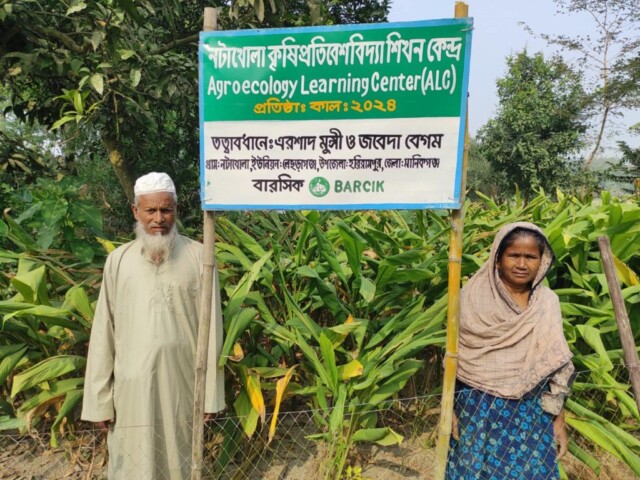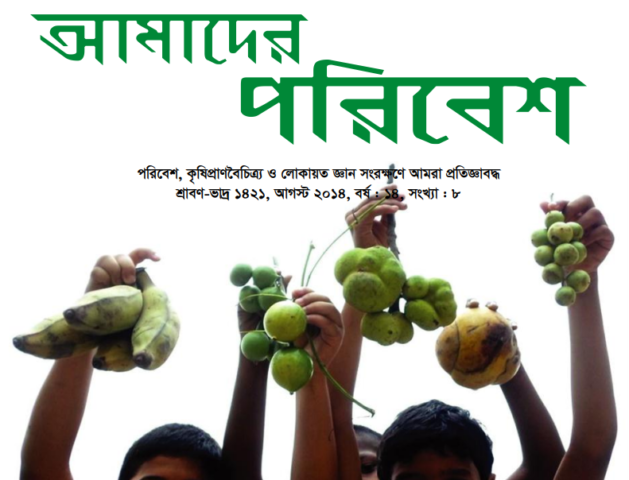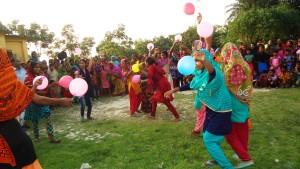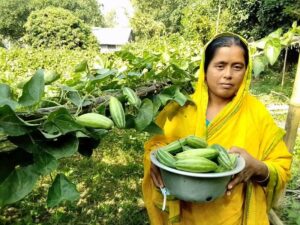Muktar Hossain, from Harirampur, Manikganj
Farmer Ershad Munshi has created an exemplary model of agricultural and environmental sustainability at Notakhola village of Harirampur Upazila, Manikganj district. At 61 years old, Ershad supports his four-member family owning a homestead of 60 decimals and having 350 acres of cultivable lands. Agriculture is his occupation.
A Farmer’s Initiative to Combat Natural Disasters
Lechraganj Union is highly vulnerable to natural disasters such as floods, droughts, and river erosion, which damage agricultural land, crops, trees, vegetables, and infrastructure. In order to address these challenges, farmers in the char areas are adopting mix cropping systems, conserving local seeds, engaging in farmer-led dialogues and experience sharing through their organizations. This strengthens sustainable farming practices.
The Journey of Notakhola Agroecology Learning Center
As part of these efforts, Ershad Munshi established the Notakhola Agroecology Learning Center (ALC) at his house being inspired from BARCIK. He has been involved with BARCIK for a long time enabling him to learn different research techniques. The Agroecology learning center is a model which BARCIK promotes to make farmers self-reliant in food production with harming the nature and environment; doing agriculture works in an environment friendly manner. The ALC promotes safe and organic farming, cultivating a variety of vegetables year-round, including Malabar spinach, radish greens, hyacinth beans, sponge gourd, cucumber, bitter gourd, bottle gourd, sweet pumpkin, eggplant, tomato, cauliflower, and cabbage. Additionally, he produces and utilizes organic pesticides such as vermicompost, tricho-compost, cow dung manure, pheromone traps, and liquid fertilizers. His field crops include Aus rice (Parangi variety) and Aman rice (Hijol and Digha varieties). The fruit trees on his land include mango, jackfruit, litchi, guava, coconut, dragon fruit, rose apple, wood apple, jujube, pomegranate, sapodilla, custard apple, and water chestnut. He also grows timber trees such as mahogany, akashmoni, kadam, neem, and jarul, along with medicinal plants like aloe vera, bijasarul, kalakishori, and ishamoti. Additionally, he rears cattle, goats, ducks, chickens, and pigeons.
A Resource center for Farmers
The Notakhola Agroecology Learning Center has already become a valuable resource for local farmers, offering guidance on seed conservation, sapling production techniques, low-cost crop cultivation, organic farming advice, and modern agricultural tools. With support from the Harirampur Upazila Agriculture Office, the center also organizes agricultural exhibitions, tricho-compost production training, and other farming-related facilities. Its central location within the union allows easy access for farmers seeking consultation and support. Being situated by the roadside has further enhanced connectivity, earning it the local nickname “Krishi Bari” (Agriculture House).
Future Plans
Ershad Munshi plans to conduct farmer-led participatory research, the research technique he learns from BARCIK attending in different events organized by the organization, on local crop varieties through his learning center. His key objectives include: Promoting crop diversity in char areas to conserve and expand local varieties, reducing agricultural costs by using organic pesticides and fertilizers and ensuring food security to minimize health risks for local communities.
Conclusion
The Notakhola Agroecology Learning Center serves as an inspirational model for farmers. It has evolved into a hub for sustainable agriculture, benefiting not only Ershad Munshi’s family but also farmers across neighboring unions. This initiative represents a grassroots movement for agricultural resilience and climate adaptation, with the potential to expand further in the coming years.

